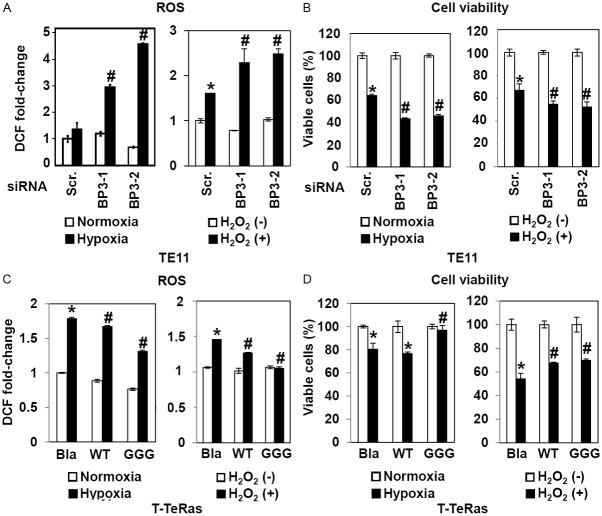Figure 6.
IGFBP3 influences ROS and cell viability in response to hypoxia or H2O2. TE11 cells were transiently transfected with siRNA directed against IGFBP3 (BP3-1 and BP3-2) or a non-silencing sequence (scr, scramble) in (A) and (B). T-TeRas derivatives with indicated genotypes were used in (C) and (D). Cells were exposed for 48 h to either hypoxia or normoxia; or H2O2 at 400 μM. In (A) and (C), ROS levels were determined by DCF assays. In (B) and (D), cell viability was determined. Bla, empty vector control; WT, wild-type IGFBP3; GGG, GGG-mutant IGFBP3. *, P<0.05 vs. scramble and either normoxia or H2O2 (-); #, P<0.05 vs. scramble and either hypoxia or H2O2 (+) (n=3) in (A) and (B). *, P<0.05 vs. Bla and either normoxia or H2O2 (-); #, P<0.05 vs. Bla and either hypoxia or H2O2 (+) (n=3) in (C) and (D).

